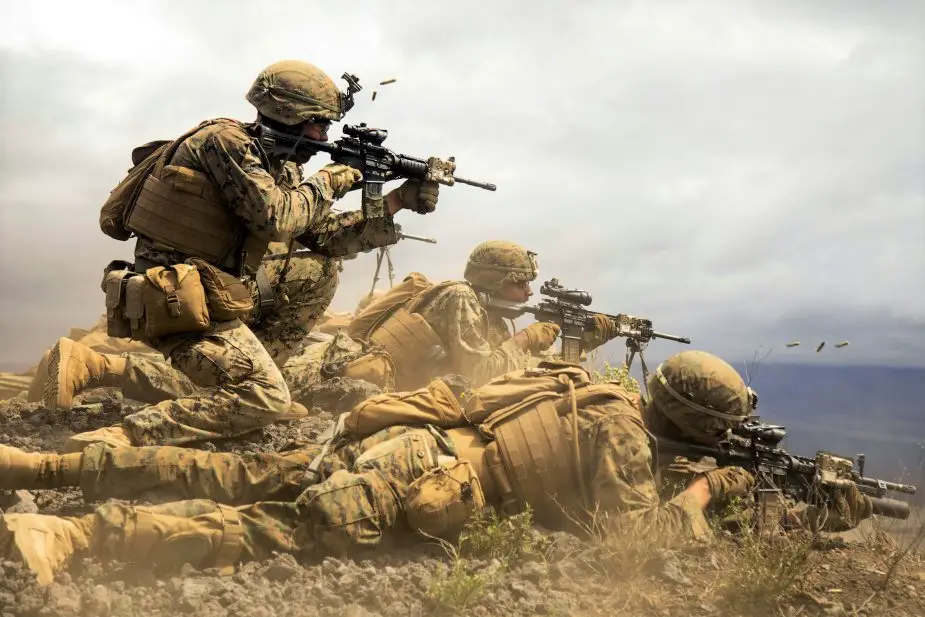Breaking news
U.S. Marine Corps fields next-generation body armor.
The U.S. Marine Corps has begun fielding a next-generation protective vest that provides improved fit, form and function for Marines. Matt Gonzales, Marine Corps Systems Command, reports.

Marines fire at targets, Exercise Bougainville II, Pōhakuloa Training Area, Hawaii, May 9, 2019 (Picture source: U.S. DoD)
The Plate Carrier Generation III is a lightweight plate carrying system that guards against bullets and fragmentation when coupled with protective plates. “This system protects Marines on the battlefield,” said Lt. Col. Andrew Konicki, the Program Manager for Infantry Combat Equipment at Marine Corps Systems Command. “The PC Gen. III is important because it is nearly 25-percent lighter than the legacy technology.”
The Marine Corps constantly looks for ways to lighten the load for Marines. PM ICE worked with industry to remove excess bulk from the legacy Plate Carrier, which was fielded in 2011. The elimination of excess material reduces the overall weight of the system and increases maneuverability, said Konicki: “When you lighten the load, Marines can get to their destinations faster and they’re going to have more endurance, which increases their lethality”.
In 2016, MCSC conducted a study to analyze the components and effectiveness of a prototype version of the PC Gen. III. Marines tested both the legacy and prototype systems during various obstacle courses, including a 15-kilometer hike at a fixed pace. The results of the study showed that participants completed the courses faster and appeared better conditioned when using newer technology. Marines’ mobility and ability to handle a weapon improved when using the PC Gen. III prototype, said Konicki.
“The PC Gen. III improves the Marines’ ability to shoot and move by eliminating excess bulk from the design, and cutting out the shoulders for a better rifle stock weld,” added Lt. Col. Bryan Leahy, Individual Armor Team lead in PM ICE.
Another advantage of the PC Gen. III lies in its fit. MCSC increased the variety of sizes, enabling nearly 15,000 more Marines—both male and female—to fit into the system when compared with the legacy technology, said Konicki. The newer system fits closer to the body, increasing protection and decreasing the risk of injury due to improper fit.
The next-generation system is designed to fit individuals of all sizes and statures—from the 2nd percentile female Marine to the 98th percentile male Marine. A curvature in the associated protective plates accommodates chest and abdomen size without compromising protection. “I think there’s a misconception that all females are small, and that’s not always true,” said Konicki. “We conducted a study that found the smallest Marine is actually male.” According to Konicki, during multiple user evaluations, female Marines said they prefer the newer technology to the legacy system because of its fit and mobility.
Infantry and infantry-like Marines will be the first to receive the PC Gen. III. The new vest body armor will then be fielded to supporting units. The program office expects the PC Gen III to reach Full Operational Capability by fiscal year 2023.


























